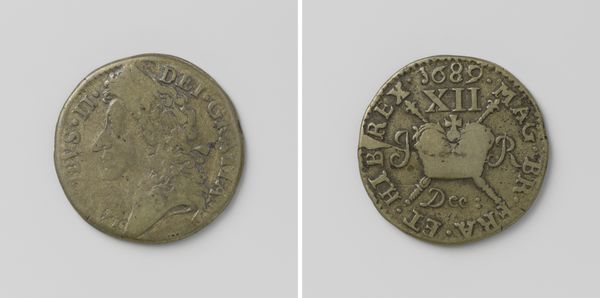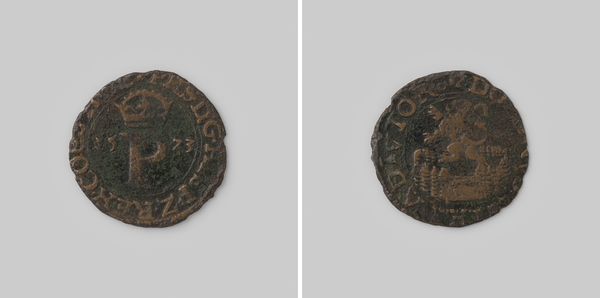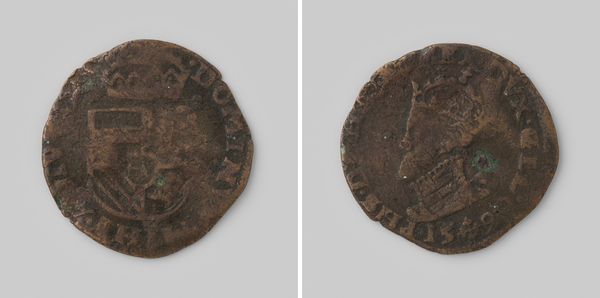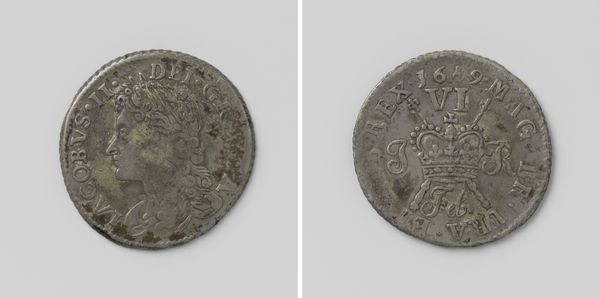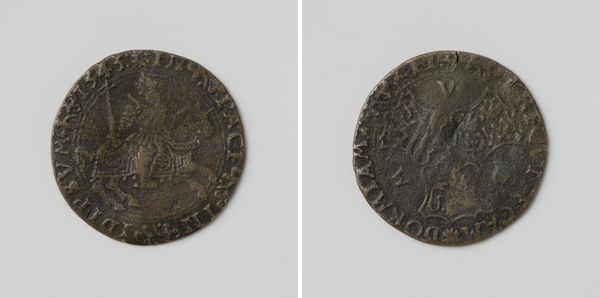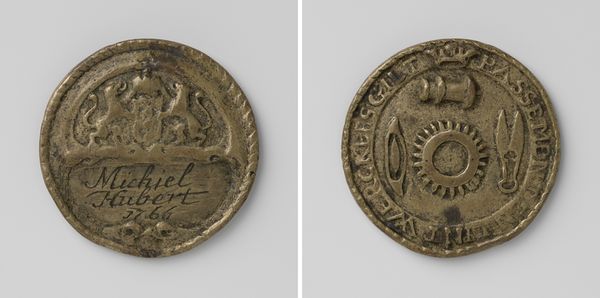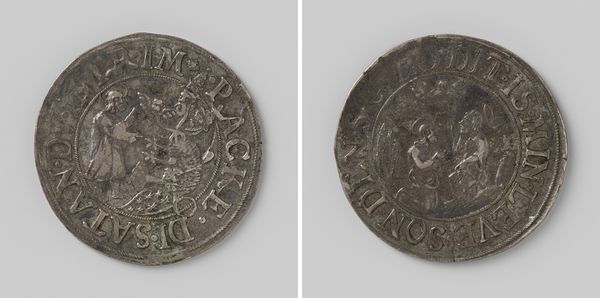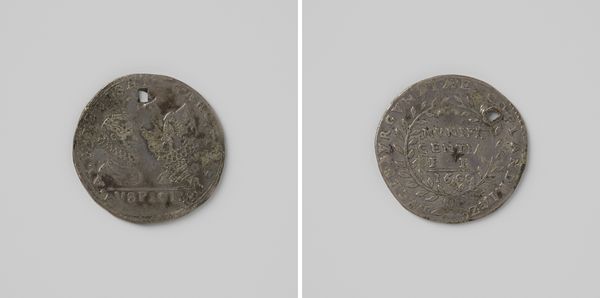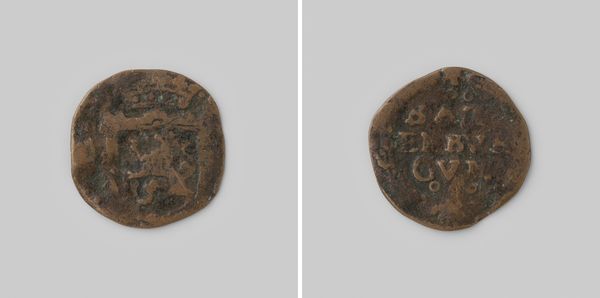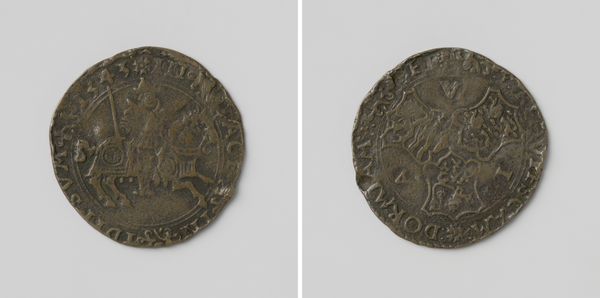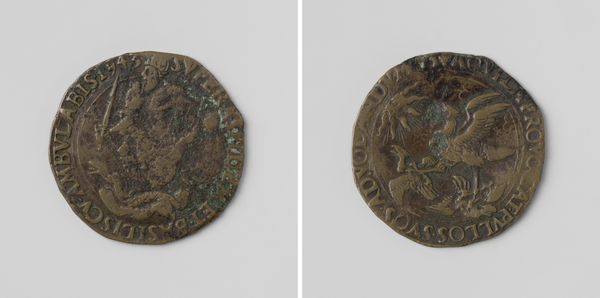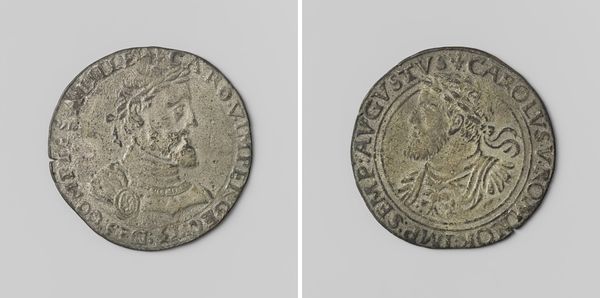
Successen van Alessandro Farnese, hertog van Parma, in de Nederlanden 1581
0:00
0:00
Dimensions: diameter 2.7 cm, weight 4.41 gr
Copyright: Rijks Museum: Open Domain
Curator: Before us, we have a medal commemorating "Successen van Alessandro Farnese, hertog van Parma, in de Nederlanden," dating back to 1581. Editor: It’s wonderfully tactile—I immediately imagine the experience of holding something made of bronze. Small but weighty, promising and powerful. Curator: Indeed. Medals such as these served as potent symbols. This one blends classical allusions with contemporary military prowess. Editor: How fascinating. Do you know how these medals were made and who made them? The labour seems delicate and demanding, with such fine lines in the material. Curator: I believe the artist remains unknown, but these would likely be produced through a combination of engraving and casting. Let's not forget the socio-political context; these were tools to broadcast authority. It is intriguing that bronze would last centuries. Editor: Absolutely. But looking at the symbolism – is that a serpent I see wrapped around… a column or a mountain perhaps? The snake carries quite varied connotations through cultures. Curator: Yes, and I see a butterfly in the obverse, the snake in this context can symbolise prudence, rebirth, the triumph of good over the unknown perhaps, which is related to Alexander's command in the Low countries. Editor: Rebirth, really? It's remarkable how materials can hold such narratives, reflecting complex social and political conditions while also, as humble objects, being traded in local economies, shifting from palm to palm across Europe. Curator: It’s a confluence of material endurance and evolving significance. This little medal opens up worlds. Editor: Looking at the worn texture of the bronze and feeling that time held inside of it makes this one compelling item from the Rijksmuseum collection.
Comments
No comments
Be the first to comment and join the conversation on the ultimate creative platform.
